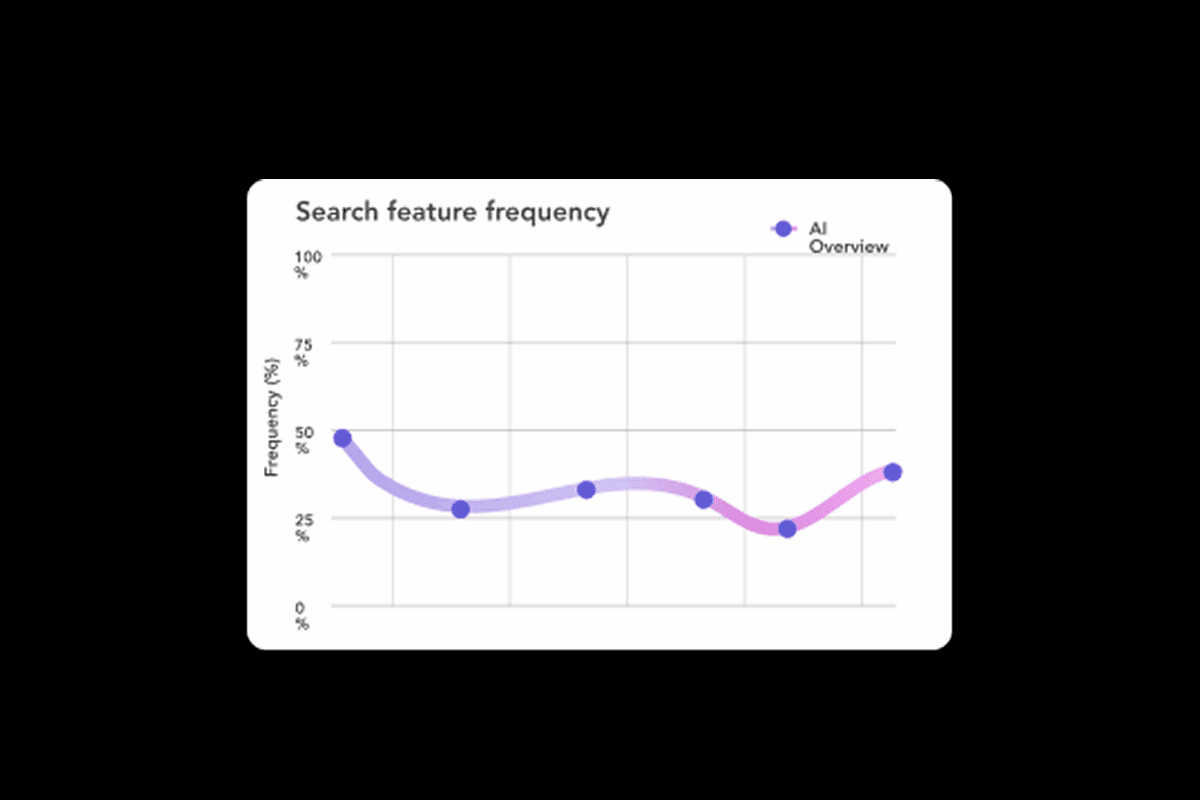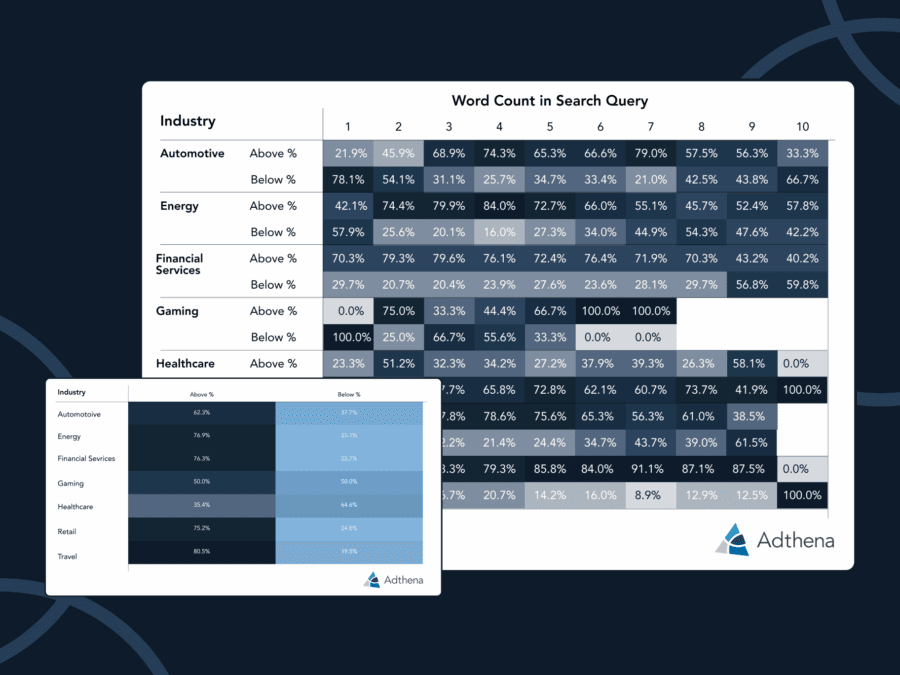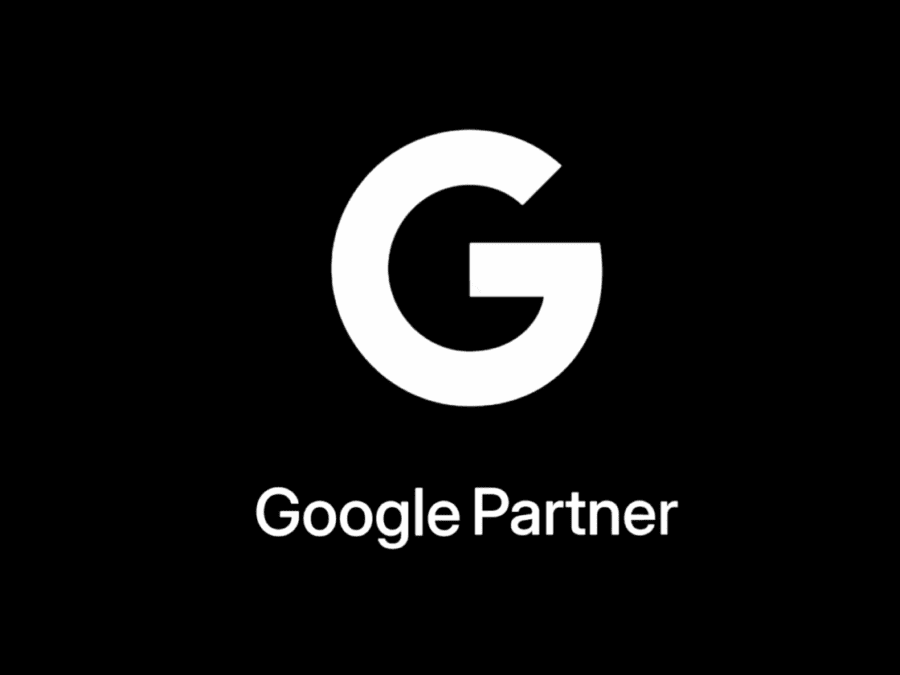The digital advertising landscape has undergone more transformation in the past 18 months than in the previous decade combined. At the center of this revolution are two converging forces: AI Overviews reshaping traditional search results, and the explosive growth of AI creating entirely new discovery pathways and creative opportunities.
Drawing from a comprehensive analysis of the search ecosystem and strategic tracking of AI-powered campaign performance, six critical trends are emerging that every advertiser needs to understand and act upon to stay competitive.
Trend #1: AI Overviews push ads below the fold
Google’s AI Overview, part of its Search Generative Experience (SGE), is fundamentally altering ad visibility. What began as an experimental feature now pushes traditional ad placements further down the page, often below the fold.
The prevalence of “zero-click searches,” where users get answers directly from the AI summary without visiting a website, has jumped from 56% to nearly 69%. This phenomenon, which has been publicly acknowledged as the “Great Decoupling,” highlights a growing mismatch between search impressions and click-through behavior.
Refined keyword lists and refreshed ads with rich extensions are now essential to offset rising costs and stand out in a compressed ad space. Visibility into how AI Overviews may affect ads is becoming increasingly important. While current tools provide only partial insights, pairing them with SERP monitoring and search intelligence can help anticipate displacement, refine bid strategies, and uncover new opportunities.
Adthena’s recent analysis of over 10.4 million SERPs reveals how AIOs are shaping search results across key global markets. The data shows a clear pattern: the longer the search term, the more likely it is to trigger an AI overview.
Implications for PPC performance
The implications for PPC performance are immediate. The compression of above-the-fold inventory means there are fewer prime ad placements available, which is driving higher CPCs as advertisers compete for diminishing real estate.
- Refine keyword targeting and ad creative to maintain visibility in compressed ad space.
- Monitor SERPs and competitor activity to anticipate AI-driven displacement.
- Leverage search intelligence to identify new opportunities in less affected areas.
Small and local businesses are feeling the pinch the most, with many reporting a need to increase ad budgets by 25% to 40% just to maintain baseline performance. The shift has created a “pay-to-play” environment where maintaining performance means increasing budgets.
Industry-specific data from 2025 further highlights this trend:

Google’s AI Overviews are pushing traditional ads down the page, fundamentally altering ad visibility. This has led to a surge in “zero-click” searches, where users get answers directly from the AI summary, and is driving up costs for the remaining premium ad spots.
Trend #2: Generative AI creates new creative channels
Generative AI platforms are transforming how brands engage audiences. Static ads are no longer enough; success now depends on creating and scaling highly personalized, visually rich content.
Google’s strategic direction is predicated on a profound shift toward an AI-centric advertising model, which includes the widespread use of generative AI. The company is cementing its position not just as a media-buying platform, but as a creative production hub. This is most tangibly reflected in the new Asset Studio, a built-in creative tool within the Google Ads interface.
The Asset Studio leverages generative AI to streamline asset production, allowing advertisers to:
- Generate images with text prompts
- Create lifestyle product visuals
- Edit images by removing objects, swapping backgrounds, and tweaking colors
- Bulk edit assets at scale
- Create and trim ad-ready videos
- Add voiceovers for video and audio ads
The primary purpose of this tool is to make it easier for advertisers to produce a continuous supply of diverse assets. This is critical because automated campaigns like Performance Max and Demand Gen thrive on a variety of quality assets. If an advertiser lacks the assets needed to succeed, Google’s AI can now assist in creating them, thus removing a key barrier to entry and reinforcing the AI-first mandate.
Implications for PPC strategy
Success now hinges on creating high-quality, attention-grabbing content that aligns with the nuances of user intent and the needs of AI-powered campaign systems.
- Pivot from keyword-focused campaigns to creative-first strategies.
- Produce a variety of high-quality assets to support AI-driven campaigns.
- Monitor AI engine visibility to avoid attribution gaps and missed opportunities.
Unlike traditional search, where you can track rankings, AI engine visibility often operates in what can feel like a “black box.” This creates attribution gaps and means that competitors may be gaining traction in AI search results while you remain completely unaware.
Trend #3: Smart bidding becomes the default
While some advertisers in regulated or niche B2B verticals still use manual bidding, Google’s deprecation of Enhanced CPC (ECPC) in March 2025 signals a clear shift toward full automation via Smart Bidding.

As most advertisers adopt similar AI-powered bidding strategies, the competitive advantage shifts from manual sophistication to data quality and strategic intelligence. Google emphasizes conversion quality over quantity and recommends feeding signals such as lead scoring, call quality, or customer lifetime value (LTV) to enhance algorithmic decisions.
Implications for your smart bidding strategy
The interconnection with the other AI-driven trends becomes apparent here. As AI Overviews change the search landscape, bidding algorithms need new signals to optimize effectively.
- Provide richer signals such as lead quality or lifetime value to improve algorithmic decision-making.
- Use SERP monitoring and market intelligence to give Smart Bidding the context it cannot see on its own.
- Strengthen first-party data collection to feed smarter targeting and maintain a competitive edge.
Trend #4: The first-party data imperative and privacy-first measurement
While the complete phase out of third-party cookies was abandoned in July 2024 due to regulatory pressure, the underlying imperative for privacy-compliant, first-party data solutions has intensified. This shift forces advertisers to fundamentally rethink how they collect and use data.
Implications for your first-party data strategy
With third-party tracking becoming increasingly unreliable, businesses must treat first-party data as a core strategic asset. Collecting high-quality customer information and integrating it across campaigns is essential for accurate measurement, smarter targeting, and effective attribution.
Advertisers should:
- Enrich customer data with behavioral and value-based metrics to guide AI-driven systems.
- Adopt privacy-first tools such as Consent Mode and the Privacy Sandbox APIs to sustain measurement.
- Align data consistently across paid search, social, and CRM to maximize insights and performance.
Trend #5: The rise of visual and interactive Ad formats
Static text ads are no longer enough to capture consumer attention. YouTube Shorts, for example, generates more than 70 billion daily views. While much of this is entertainment-led, the scale highlights how consumer attention has shifted to quick, mobile-first content. For advertisers, short, engaging creative is essential.
Google’s search results increasingly resemble social feeds, making visual assets such as images and rich media important even in traditional search campaigns. Rich media ads with video, audio, or interactive features drive higher interaction rates. Advertisers are also experimenting with polls, quizzes, and augmented reality to create memorable brand interactions.
Implications for your ad strategy
To succeed in a more visual and interactive landscape, advertisers need to embrace visual and interactive formats to be better positioned to capture attention and connect with audiences.
- Invest in short, mobile-first content that captures attention quickly.
- Build visual assets into search and display campaigns to align with changing SERPs.
- Test interactive formats like polls and AR to drive engagement and brand recall.
Trend #6: The full-funnel automation mandate
A central trend in 2025 is Google’s push for advertisers to adopt a complementary, AI-powered, full-funnel campaign strategy. This strategy is built on the tandem use of Performance Max (PMax) and Demand Gen campaigns.
- PMax is positioned as the lower-funnel engine for capturing existing demand. It is designed to maximize conversions across Google’s entire inventory, including Search, Display, YouTube, and Shopping, by allowing Google’s AI to handle bidding, targeting, and placement.
- Demand Gen is the new upper and mid-funnel solution designed to create new demand. These campaigns are particularly well-suited for social-first advertisers and those focused on brand building and awareness. Demand Gen utilizes visually engaging ads on channels like YouTube, Discovery, and Gmail.

Caption: Google’s strategic vision is a unified, full-funnel approach powered by two complementary AI campaigns. Demand Gen works to create new demand at the top of the funnel, while Performance Max efficiently captures existing, high-intent demand at the bottom.
Google’s vision positions PMax as the “net” to capture high-intent users and Demand Gen as the “harpoon” to engage and nurture audiences earlier in the funnel. The migration of Video Action Campaigns (VAC) to Demand Gen by Q2 2025 reinforces this unified, AI-first approach and signals that manual, keyword-centric campaigns are increasingly less effective.
Implications for your full-funnel strategy
To get the most from full-funnel automation, advertisers need to adjust how they plan, execute, and measure campaigns:
- Use PMax and Demand Gen together to capture high-intent audiences and nurture new prospects.
- Move beyond manual, keyword-driven campaigns as AI-driven automation becomes the default.
- Feed AI with high-quality assets and first-party data to improve targeting and performance.
- Measure across the full funnel to ensure insights from upper-funnel activity inform lower-funnel optimization.
The convergence challenge: A strategic blueprint
These six trends don’t operate in isolation; they are converging. AI Overviews are changing the SERP landscape, while generative AI creates new creative and discovery pathways, all while smart bidding systems attempt to optimize performance using a new set of signals and a growing reliance on high-quality data and assets.
Advertisers who adapt to an AI-first, full-funnel strategy and feed comprehensive market intelligence into their campaigns will maintain a competitive edge.
The solution: AI-Powered search intelligence
As AI reshapes the landscape, AI optimization requires AI-powered intelligence. The key to success is understanding your competitive position and feeding that comprehensive market intelligence into your strategies.
Request a demo today to see how Adthena can support your AI search strategy.







